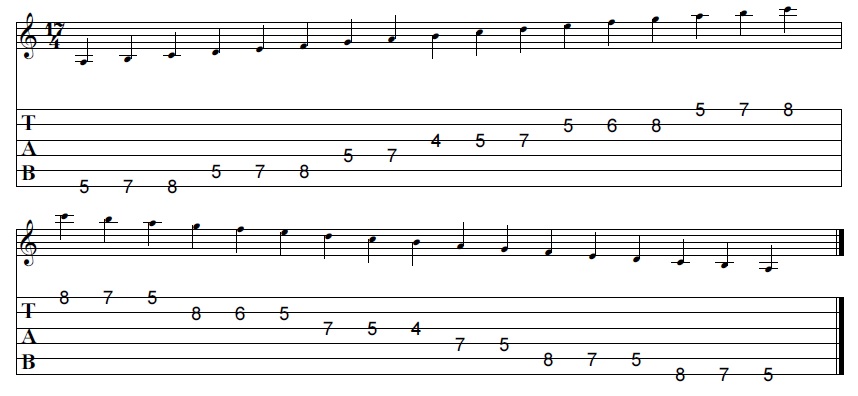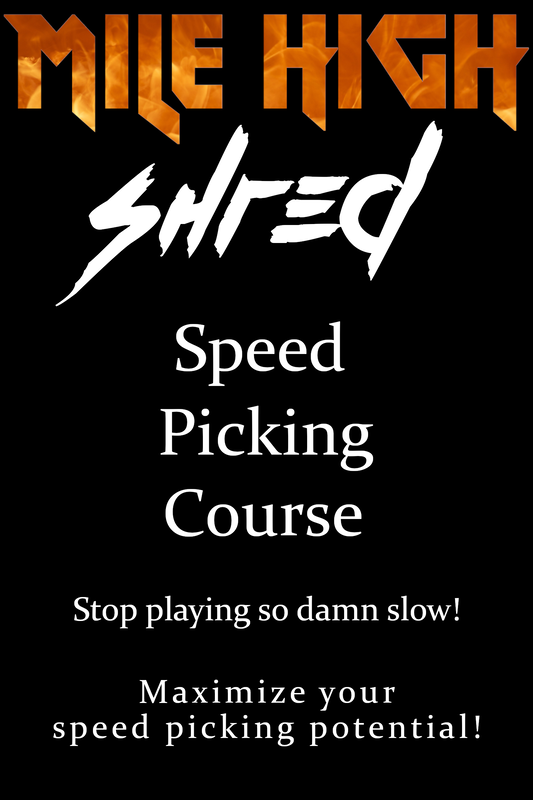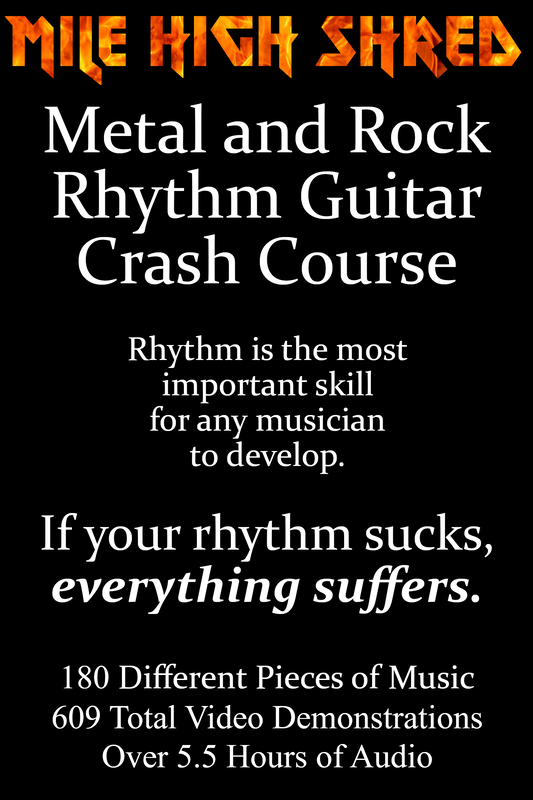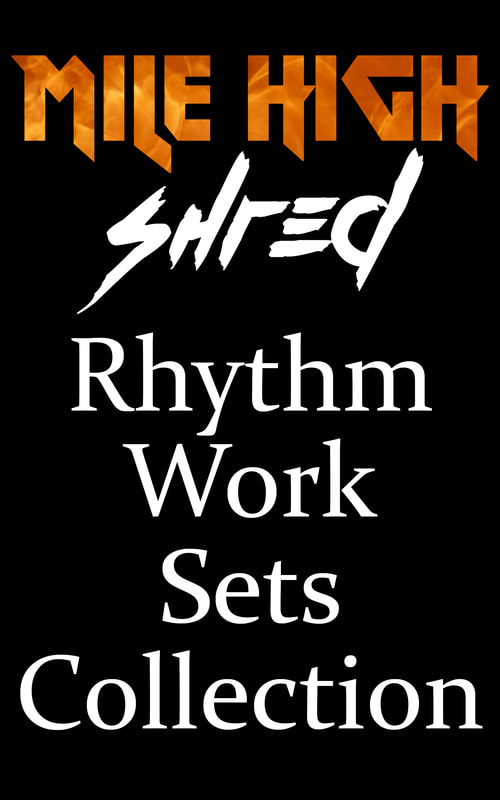|
Ryan Leach made an excellent video describing a way of writing music called a "Sentence Form". This video is an edited down live stream of watching the instructional, plus trying out this method of writing some metal guitar riffs.
Here is the highly recommended original video from Ryan Leach: https://youtu.be/ucNWbawSiZM
0 Comments
Lydian is such a cool sounding mode. The #4 in the mode is what makes it sound so unique. One of my favorites!
Dave Davidson must think so too. In a lesson with Guitar World, Dave demonstrates how you can create some unique sounding riffs using the Lydian mode. And here is that very same lesson!
There's a LOT you can do with scale shapes besides just going up and down one note at a time.
Most of the music you listen to can fit into scale shapes. Knowing your scales can allow you tons of musical ideas. Turns out that John Petrucci and I use scale shapes in a similar way to create riffs. Check out this video where Petrucci demonstrates this approach to song/riff writing:
This is something I know very little about. I understand a general idea of how you can approach using chromatic runs during a solo to make things sound more interesting, but nothing too advanced.
"So how are you going to teach how to use chromatic notes in solos?" Well, I'm not. Guthrie Govan is! I found this lesson to be very informative on how to utilize chromatic notes, and wanted to share it!
Yup. I like playing fast. It's fun. It's exciting. But, is it musical?
Yes! I say it is. It also depends on how it's used though. However, I do agree that it feels as if musicality is lost when all a guitar player does is haul ass up and down scales, cramming in as many notes as possible, AAAAALLLLLLLL THEEEE TIME. So, how can you focus on the musicality of a scale instead of just playing it as fast as you can?
PLAAAAAAAAAAAY SLOOOOOOOOOW
That's right! P-L-A-Y S-L-O-W
Playing slow allows you to HEAR the notes you are using. Whether you are playing to a backing track, or by yourself (no accompaniment), it's a FANTASTIC idea to practice playing your solos, leads, scales, SLOW! In fact, I always advise new students to practice improv slowly. When you are new to improv, it can be very helpful to play nice and slow so you allow your ears to grow accustomed to what you are playing and hearing. Guthrie Govan talks about this in a lesson he did with Guitar World. Definitely worth the watch!
I think it's safe to say that Joe Satriani understands how to write music, and create memorable melodies.
Ever wonder what his approach to writing melodies might be? You're in luck! Even if you haven't wondered what his approach may be, you too can find something useful in his lesson:
The following video lesson talks about how to write in Phrygian Dominant.
The following tabs are used in examples during the lesson.
Want to help get even more lessons released? CLICK HERE!
I was asked to put a video together to show what techniques are used in death and black metal. All the techniques used in this style of music are really used in just about any form of metal, or music in general.
It's how you use the techniques that count. However, the techniques used a lot are:
Death and black metal, in my opinion, are both very similar. They're both extremely aggressive in how they sound. They both have strong negative emotions attached to what is played. There's a lot of hate and anger with how the notes are played, as well as the lyrics. Sometimes the lyrics can be more political, or story telling, but most of the time they deal with something harsh. Death metal tends to be played in the lower register of notes for the riffs and rhythms. Black metal tends to be a bit higher pitched. That was just a broad generalization. There are always exceptions. Death and black metal will sometimes borrow elements from each other. For the inexperienced listener it can be next to impossible to tell the difference between these two styles of music. To truly learn how to play death and/or black metal, it would do you well to learn the songs, or parts of songs, that have a sound you're looking to emulate. Learning what chords are used and how the individual notes of riffs are structured will help you to hear how different sounds and emotions are created. Learning different scales and chord theory will also help with this. Starting with minor and harmonic minor scales is a good place. Understanding triad chords is where I recommend you start learning about chord theory. Do you have any thoughts or opinions about how death and black metal are different? Perhaps how they're related? Please share your ideas in the comments!
The only way to get really good at improvising guitar solos (aka: improv) is to play a LOT of solos.
I realize that's not a very glamorous answer, but it's the truth. But, where do you start and how? Something that will help you get off to a great start to making up your guitar leads is to learn at least one scale. The video demonstration of this lesson at the end of the blog uses the A minor scale.
All you have to do is play any of those notes, in any order, as many times as you want, any way you want while playing over a backing track. If you go to YouTube and search for A minor backing track, or C Major backing track, you can solo over those tracks with the A minor scale.
Here are some examples found on YouTube you can use:
Something to help your solos sound more pleasing to the ear is to always listen to resolve. What I mean by that is to listen to how the notes sound when you're playing around the scale, and when one note sounds really nice, let it ring out for a bit.
When you resolve something in music, I look at it like you are going to a note or chord that sounds like what you are playing is now complete, or finished. A lot of music is about causing tension, then resolving, or releasing that tension. So, when you practice your solos, always listen for notes that sound like there is no tension and hold that note, letting it ring out for a bit. When practicing over the A minor backing tracks, something you can try is to start on an A note. The locations of the A notes in the scale shown above are the 5th fret on the low E string, 7th fret on the D string, and 5th fret on the high E string. Hit an A note, then start playing notes around that A note, then come back to the A note and let it ring out for a bit. Because A is the root note of the key it should resolve nicely most of the time. You can also try this with a C note. The key of A minor and key of C Major are relative. They both share the same 7 notes: A, B, C, D, E, F, and G. The C notes in the scale shown above are found on the 8th fret of the low E string, 5th fret of the G string, and 8th fret of the high E string. Once you become comfortable with starting and stopping on either A or C, try using your ear to find notes that sound good against the chords you are playing to, and let them ring out for a bit. Allowing your notes to breathe will help to create more memorable solos and leads. The Tao De Ching says that "great music spares notes". This is true, because the spaces in between notes are what help give music life. What I'm getting at is that it's important not to cram in as many notes as possible the entire time you're improvising. I'm guilty of this, as is nearly every guitarist when they first start making up their solos. It's perfectly fine to play fast lines of notes in a solo, but they will be more memorable when spaced out. To help get used to this idea, and to help train your ears to know when you just resolved your phrase, play slow. REALLY slow! Let your notes ring out for about a second or more. Really give your ears time to hear just how each note sounds against the chords you are playing over. After playing slow for a while, and you feel comfortable with this, then you can try incorporating some speedy licks into your solo. Just remember to space them out so they sound more memorable and extra impressive! Watch the following video for demonstrations of the ideas mentioned in this lesson.
|
Available Instruction Courses
|
- Metal and Rock Guitar Lessons
- Reach Your Fastest Speeds
-
Menu
- Skype Lessons
- Sign Up for Skype Guitar Lessons
- Video Correspondence Lessons
- Sign Up for Video Correspondence Lessons
- FREE Lessons for a WEEK >
- Free Tabs
- Get TWO FREE eBooks
- Rates
- Instruction Courses >
- Video Feedback Lessons
- Contact
- Blog (LOTS of Free Lessons)
- Student Testimonies
- Backing Tracks
- Store
IN DEPTH
|
|









 RSS Feed
RSS Feed